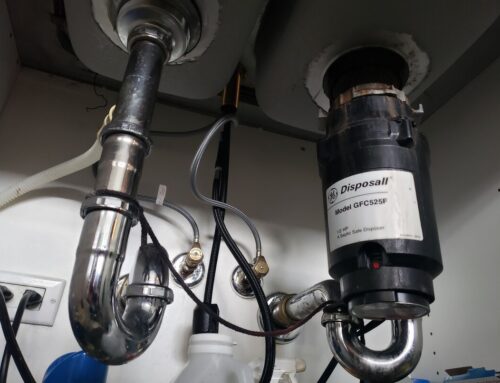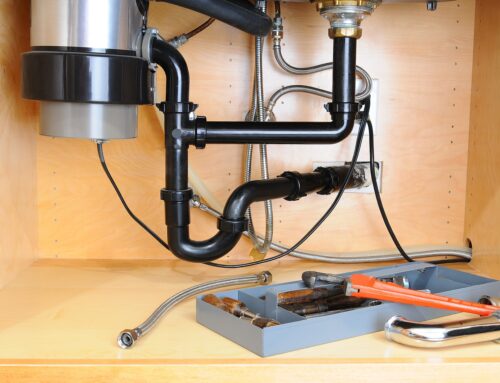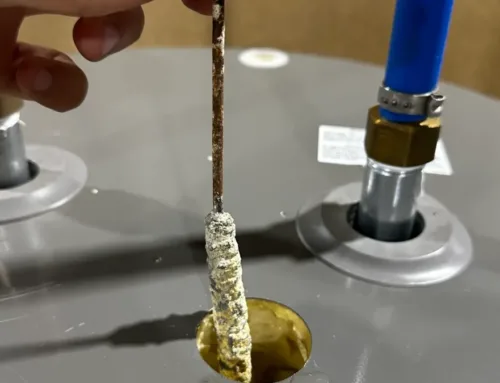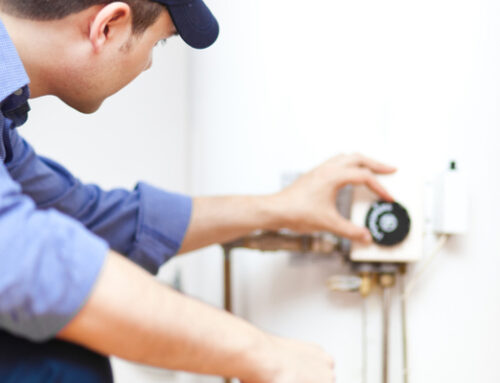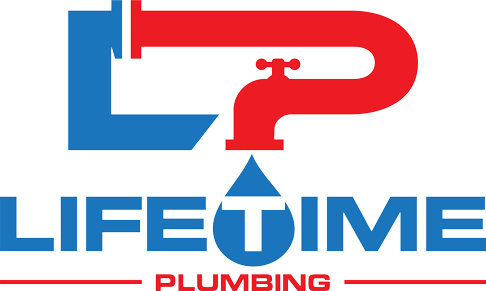Table of Contents
- 1 Faucet Parts Diagram: A Comprehensive Guidet
- 2 The Role of Faucet Parts in Ensuring a Reliable Plumbing System
- 3 Understanding the Key Faucet Parts and Their Significance
- 4 Choosing the Right Faucet Mount Type for Your Sink
- 5 Exploring Different Faucet Materials and Finishes for Long-lasting Beauty
- 6 Considering Durability, Functionality, and Style in Your Faucet Choices
- 7 Essential Tips for Proper Installation and Maintenance
- 8 Conclusion
Faucet Parts Diagram: A Comprehensive Guidet
As plumbers with years of experience, we have witnessed firsthand the crucial role that quality faucet parts play in maintaining the longevity of plumbing systems. The impact of faucet parts on the overall performance and efficiency of kitchen and bathroom fixtures cannot be overstated.
In this comprehensive guide, we will delve into the intricate world of faucet parts, exploring their significance and understanding how they contribute to the smooth functioning of essential areas in your home. Whether it’s the kitchen or bathroom, the right faucet parts are instrumental in ensuring a reliable plumbing system.
At Lifetime Plumbing, our commitment to quality craftsmanship and durable solutions has made us trusted plumbers in Chicago. As you embark on this enlightening journey through the realm of faucet parts, keep in mind the profound difference that premium components can make in your plumbing system’s durability.
The Role of Faucet Parts in Ensuring a Reliable Plumbing System
Faucets play a crucial role in any home due to their frequent use and impact on water flow regulation. While we will primarily focus on kitchen faucets in this guide, keep in mind that the information shared is also applicable to bathroom faucets.
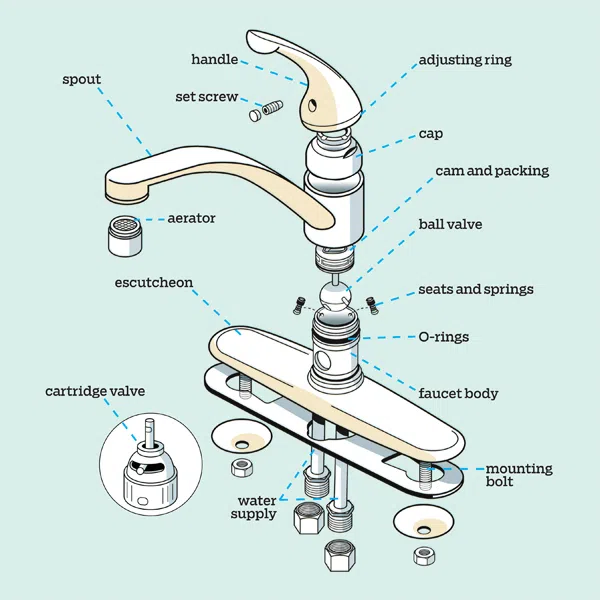
A faucet system consists of different components working together to ensure its overall performance and efficiency. Each part plays a crucial role in maintaining a reliable plumbing system:
Sink Size/Shape/Features
The size and shape of your sink can influence the type of faucet that works best with it. Specific features or configurations may need to be considered when matching the two.
Aerator
An aerator is an essential component of a faucet as it regulates water flow and helps conserve water. There are different types of aerators available, each offering unique benefits such as reducing splashing or improving water pressure.
Spout
The spout is responsible for delivering water from the faucet to the sink. There are various types of spouts, including straight, gooseneck, shepherd’s crook, and articulating spouts. The height and reach of the spout can be considered based on the size of your sink and personal preference.
Handle
Faucets can come with either one-handle or two-handle designs. One-handle faucets offer ease of use and precise temperature control, while two-handle faucets provide separate control over hot and cold water. Consider your preferences and space limitations when choosing between these handle types.
Valve
The valve is responsible for controlling the flow of water within the faucet. Different types of valves are used in faucets, such as cartridge valves, plastic/metal/ceramic disc valves. These valves vary in durability and performance, so understanding their differences is crucial when selecting a faucet.
Other Faucet Parts
Apart from the main components mentioned above, other parts such as the body design (single-hole, bridge, widespread) also play a role in both functionality and aesthetics. Consider these additional parts when choosing a faucet that matches your needs and style.
By understanding the significance of each faucet part and how they work together, you can make informed decisions when selecting the right faucet for your kitchen or bathroom.
Understanding the Key Faucet Parts and Their Significance
When it comes to choosing the right faucet for your kitchen or bathroom, it’s important to understand the different parts that make up a faucet and how they contribute to its overall performance. In this section, we will explore the key faucet parts and their significance in detail.
1. Sink Size/Shape/Features
The size, shape, and features of your sink play a crucial role in determining the type of faucet that works best with it. Here are some factors to consider when matching your sink with a faucet:
Size:
The size of your sink will determine the reach and height of the spout that you need. A larger sink may require a faucet with a longer spout reach to ensure proper coverage.
Shape:
Different sink shapes may require specific faucets. For example, a farmhouse sink with an apron front may require a wall-mounted faucet, while a drop-in sink may be compatible with various faucets.
Features:
Some sinks come with additional features such as built-in soap dispensers or sprayers. Make sure to choose a faucet that is compatible with these features if you want to incorporate them into your sink setup.
By considering these factors, you can ensure that your faucet fits seamlessly with your sink, both in terms of functionality and aesthetics.
2. Aerator
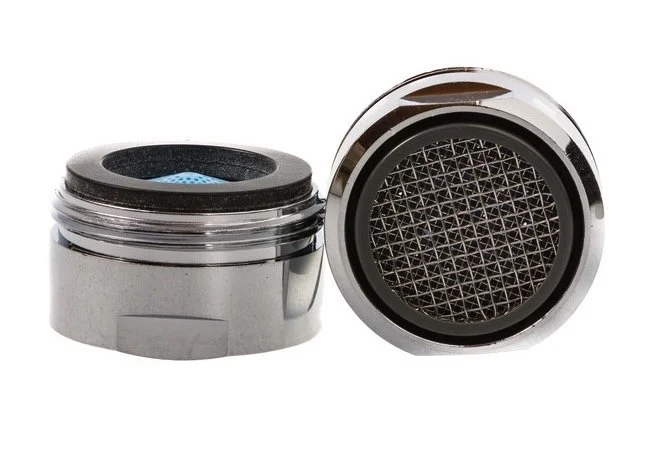
An aerator is an essential part of a faucet that mixes air with water to reduce splashing and improve water flow efficiency. It also helps conserve water by reducing the amount of water that flows through the faucet. There are different types of aerators available, including:
- Mesh aerators: These are the most common type of aerators found in faucets. They feature a fine mesh screen that helps filter out debris from the water while providing an even flow.
- Low-flow aerators: These aerators are specifically designed to reduce the flow rate of water, making them ideal for water-saving purposes. They can help you conserve water without compromising on performance.
Choosing the right aerator for your faucet can significantly impact the overall functionality and efficiency of your faucet.
What is an Aerator and Why is it Important?
An aerator is a small device that screws onto the end of a faucet spout. It helps regulate water flow and make it more efficient. Let’s dive into the details of how an aerator works and why it matters for your faucet.
How Does an Aerator Work?
The main job of an aerator is to mix air with the water that comes out of the faucet. This serves a few important purposes:
- Saving Water: By adding air into the water stream, an aerator can reduce water usage without affecting performance. It does this by maintaining a steady flow while using less water.
- Preventing Splashing: The introduction of air helps minimize splashing, so you don’t end up with water all over your sink.
- Decreasing Noise: An aerator can also reduce the noise caused by rushing water, creating a quieter experience in your kitchen or bathroom.
Different Types of Aerators
Not all aerators are created equal! There are several types available, each with its own features and benefits:
- Standard Aerators: These are the most common type, usually featuring a mesh screen that breaks up the water into smaller streams. They’re great for reducing splashing and maintaining a consistent flow.
- Caché Aerators: If you prefer a sleek, minimalist look for your faucet, consider a caché aerator. It’s hidden inside the spout, giving your sink a clean appearance.
- Low-flow Aerators: Want to be extra conscious about water conservation? Low-flow aerators are designed to limit flow rates and save even more water.
- Swivel Aerators: Need more flexibility when using your faucet? Swivel aerators have a rotating head that lets you adjust the direction of the water flow, making tasks like dishwashing or filling large pots easier.
The Benefits of Using an Aerator
Using an aerator in your faucet can have several advantages:
- Save Water and Money: Since aerators reduce water consumption, they can lead to significant savings on your water bill.
- Conserve Energy: With less water being used, you’ll also save on energy costs, especially if you have a hot water heater.
- Keep Your Sink Clean: By preventing splashing, aerators help keep your sink area tidy and free from mess.
- Enjoy a Quieter Environment: The noise-reducing properties of aerators create a more peaceful atmosphere in your kitchen or bathroom.
Remember, it’s important to choose the right aerator for your faucet to ensure compatibility and maximize its benefits. Take into account factors like flow rate, design, and any specific needs you may have.
3. Spout
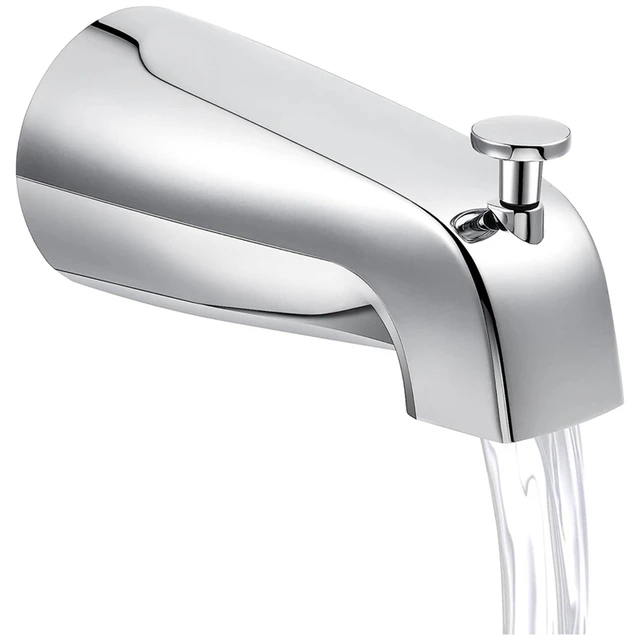
The spout is an essential part of a faucet that determines the direction and flow of water. It plays a crucial role in both the functionality and aesthetics of the faucet. Let’s explore the different types of spouts and their characteristics:
Straight Spout
The straight spout is a classic design that offers a simple and clean look. It provides a direct flow of water, making it ideal for everyday tasks like washing hands or filling up containers. Straight spouts are commonly found in traditional and minimalist faucet styles.
Gooseneck Spout
The gooseneck spout features a curved shape that resembles the neck of a goose, hence its name. It offers increased clearance between the spout and the sink, allowing you to easily wash larger dishes or pots. Gooseneck spouts are popular in contemporary and modern kitchen designs due to their sleek and elegant appearance.
Shepherd’s Crook Spout
The shepherd’s crook spout has an S-shaped curve, resembling the shape of a shepherd’s crook. It combines elements of both straight and gooseneck spouts, offering a unique and visually appealing design. Shepherd’s crook spouts are often used in traditional or farmhouse-style kitchens, adding a touch of rustic charm.
Articulating Spout
The articulating spout provides maximum flexibility and functionality. It features multiple joints or movable parts that allow you to adjust the direction and angle of the water flow. Articulating spouts are highly versatile and convenient, especially when you need to reach different areas of the sink or fill up larger containers.
When choosing a spout for your faucet, it’s important to consider both the size of your sink and your personal preferences:
- Spout Height: The height of the spout should be proportional to the size of your sink. A tall spout may look disproportionate on a small sink, while a short spout might not provide enough clearance for larger dishes in a deep sink.
- Spout Reach: The reach of the spout determines how far the water will extend into the sink. It’s essential to choose a spout with sufficient reach to ensure that the water stream falls directly into the center of the sink basin, minimizing splashing.
By carefully considering your sink size and your specific needs, you can select a spout that not only complements the overall style of your kitchen or bathroom but also enhances its functionality.
4. Handle
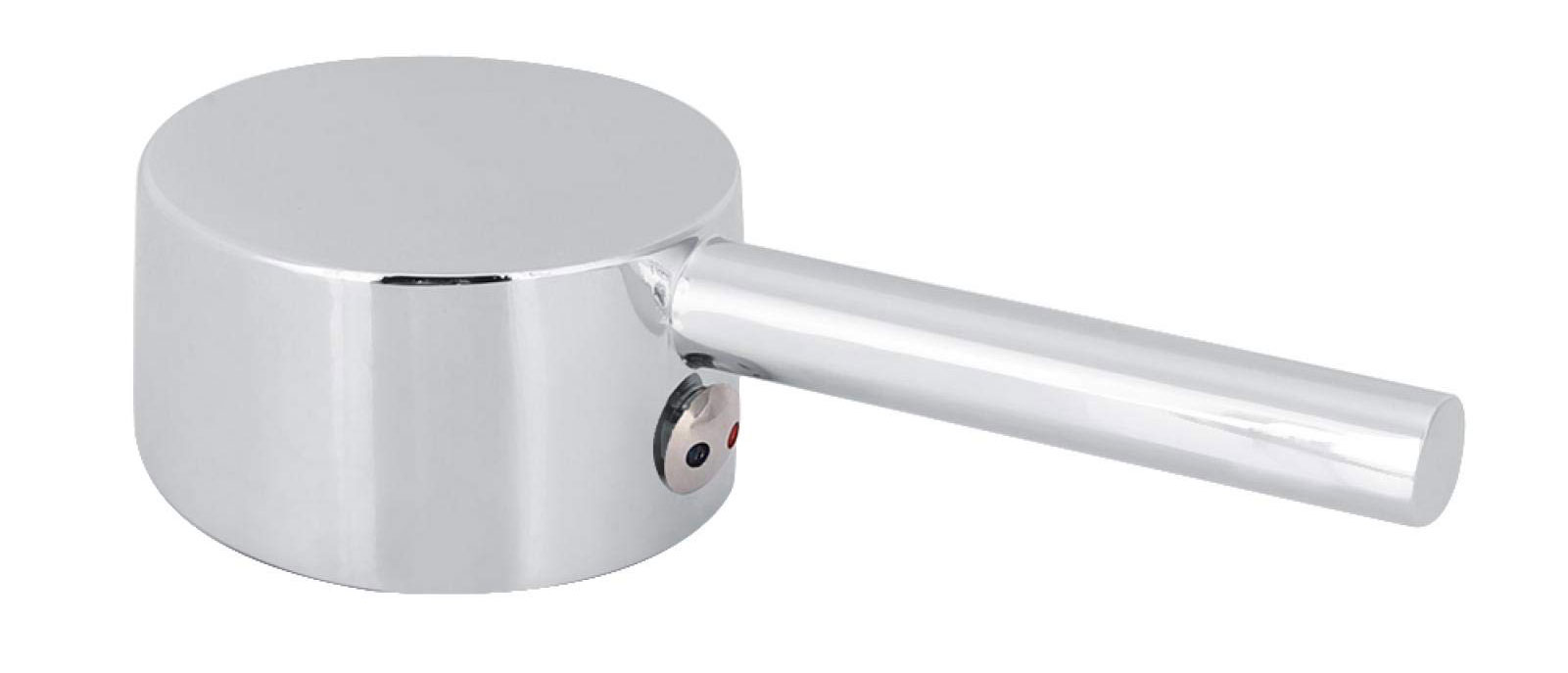
When it comes to faucet parts, one crucial component that greatly affects the functionality and user experience is the handle. The handle allows you to control the water flow and temperature, making it an essential part of any kitchen or bathroom faucet.
One-Handle Faucets
One-handle faucets, also known as single-handle faucets, have become increasingly popular due to their convenience and ease of use. With just one lever or knob, you can easily adjust both the water temperature and flow rate. Here are some key points to consider when opting for a one-handle faucet:
- Ease of Use: One-handle faucets offer a seamless and intuitive user experience. The single lever allows for quick and precise adjustment of water temperature and flow with just one hand, making it ideal for multitasking in the kitchen.
- Space-saving Design: The compact design of one-handle faucets saves valuable countertop space, especially in smaller kitchens or bathrooms.
- Modern Aesthetic: One-handle faucets often feature sleek and contemporary designs that can enhance the overall look of your kitchen or bathroom.
However, it’s important to note that one-handle faucets may not be suitable for everyone. Here are a few considerations:
- Temperature Control: While most one-handle faucets provide easy temperature adjustment, some models may require you to find the perfect balance between hot and cold water each time you turn on the faucet.
- Repair Complexity: Repairing a one-handle faucet can be more intricate compared to a two-handle faucet. If any issues arise with the cartridge or internal components, it may require professional assistance or specific replacement parts.
Two-Handle Faucets
Two-handle faucets have long been a classic choice in many kitchens and bathrooms. As the name suggests, these faucets feature separate handles for controlling the hot and cold water. Here are some key considerations when considering a two-handle faucet:
- Precise Temperature Control: With separate hot and cold handles, you can achieve precise temperature control by individually adjusting each handle. This can be particularly advantageous if you have specific preferences for different tasks or if multiple people with varying temperature preferences will be using the faucet.
- Repair Simplicity: Two-handle faucets generally have a simpler design compared to one-handle faucets, making repairs and maintenance easier. If any issues arise, it is often straightforward to identify and replace the faulty components.
However, there are a few factors to keep in mind when opting for a two-handle faucet:
- Space Requirement: Two-handle faucets typically require more space on the countertop or sink due to the presence of two separate handles.
- Operation Complexity: Compared to one-handle faucets, two-handle faucets may require slightly more effort to adjust both the water temperature and flow rate. It may take some time to find the perfect balance between hot and cold water.
In summary, the choice between a one-handle or two-handle faucet ultimately depends on your personal preferences and specific needs. Consider factors such as ease of use, space availability, repair complexity, and aesthetic appeal when making your decision. Both types of handles offer their own set of advantages and disadvantages, so take the time to evaluate which option aligns best with your requirements.
5. Valve
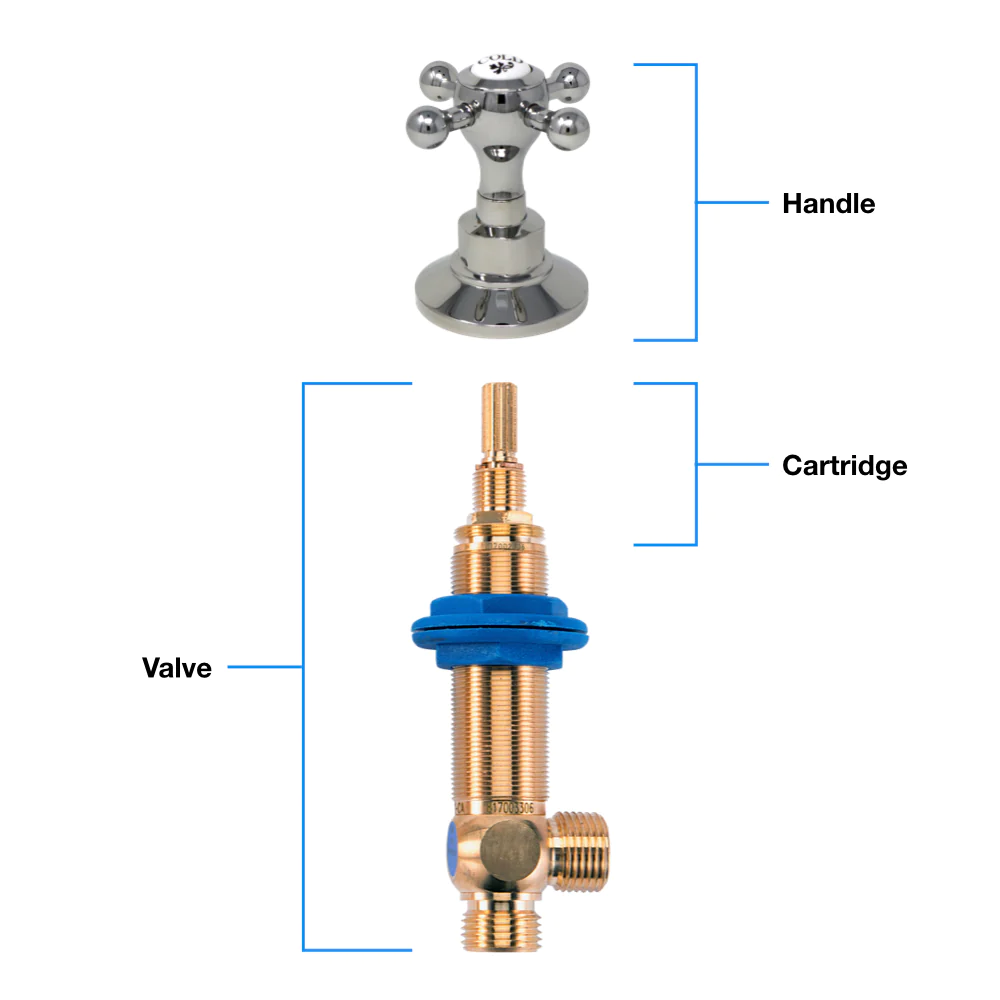
When it comes to faucet parts, the valve plays a crucial role in regulating water flow and controlling the temperature of the water. There are different types of valves used in faucets, each with its own set of characteristics and benefits. Let’s explore the major types of faucet valves and discuss their functions and factors to consider during selection.
Cartridge Valve
- The cartridge valve is a popular choice for modern faucets due to its reliability and ease of use.
- It operates using a movable stem cartridge that controls the flow of water.
- Cartridge valves are known for their smooth handle operation and drip-free performance.
- Considered suitable for both high and low water pressure systems.
Plastic Disc Valve
- Plastic disc valves are affordable and offer decent durability.
- They are less susceptible to corrosion, making them a practical choice for areas with hard water.
- However, they may not provide the same level of longevity as metal or ceramic disc valves.
Metal Disc Valve
- Metal disc valves are known for their robust construction and long-lasting performance.
- They can withstand high temperatures and are resistant to wear and tear.
- Ideal for heavy daily use in kitchens and bathrooms.
Ceramic Disc Valve
- Ceramic disc valves are highly durable and resistant to corrosion.
- They offer precise control over water flow and temperature, ensuring smooth operation.
- Known for their longevity, making them a cost-effective choice in the long run.
When comparing the materials used in valves, durability and performance become key considerations:
- Cartridge valves offer reliability and ease of use, suitable for various water pressure systems.
- Plastic disc valves provide affordability and resistance to corrosion but may have limitations in terms of longevity.
- Metal disc valves excel in durability, making them ideal for heavy daily use.
- Ceramic disc valves stand out for their longevity and precise control over water flow.
It’s essential to consider factors such as water quality, frequency of use, and maintenance requirements when selecting the right valve type for your faucet. By understanding the unique characteristics of each valve type, you can make an informed decision that aligns with your specific needs.
6. Other Faucet Parts to Consider
In addition to the key faucet parts mentioned above, there are other components that play a role in the overall performance and aesthetics of your faucet. These include:
- Body design: The body design refers to how the faucet is installed on the sink. Common designs include single-hole, bridge, and widespread. Each design offers unique features and visual appeal.
- Additional features: Some faucets come with additional features such as built-in soap dispensers or pull-out sprayers. Consider these features based on your specific needs and preferences.
By considering all these factors, you can choose faucet parts that are not only functional but also complement your kitchen or bathroom decor.
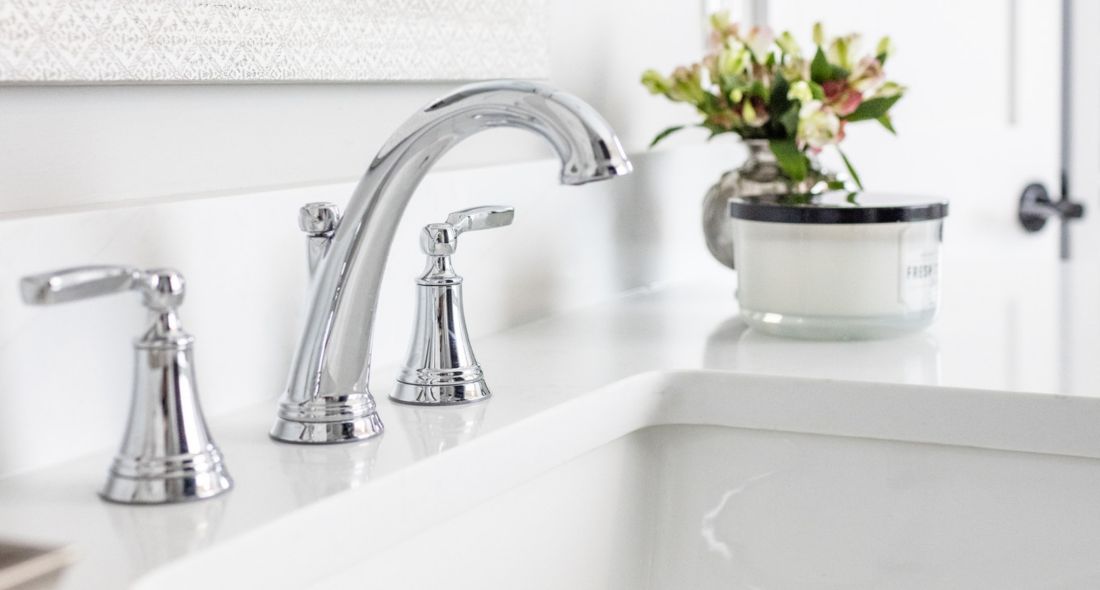
Choosing the Right Faucet Mount Type for Your Sink
When it comes to choosing the right faucet for your sink, you need to consider the mount type that best suits your sink configuration. There are two primary types of faucet mounts to choose from: deck mount and wall mount. Each type offers distinct advantages and considerations, so understanding their differences is crucial in making an informed decision.
Deck Mount Faucets
Deck mount faucets are installed directly onto the sink or countertop. They offer versatility, easy installation, and accessible maintenance. However, they require sufficient space behind the sink for installation and may require regular cleaning around the base of the faucet.
Wall Mount Faucets
Wall mount faucets are attached to the wall behind the sink, with the water spout extending over the sink basin. They provide a sleek aesthetic, cleaning convenience, and space-saving benefits. However, they often require faucet professional installation due to plumbing adjustments and may not be suitable for all sink styles.
Factors to Consider
When deciding between deck mount and wall mount faucets, consider the following factors based on your specific needs:
- Sink Configuration: Assess the available space around your sink and the existing plumbing setup to determine which mount type is compatible.
- Aesthetic Preferences: Consider your design preferences and how the faucet mount type complements the overall look of your kitchen or bathroom.
- Functionality: Evaluate how each mount type aligns with your daily usage and convenience in accessing the water flow.
By carefully considering these factors, you can confidently select the most suitable faucet mount type that enhances both the functionality and aesthetics of your kitchen or bathroom.
Exploring Different Faucet Materials and Finishes for Long-lasting Beauty
When it comes to choosing the right faucet for your kitchen or bathroom, considering the materials and finishes is crucial. The durability and aesthetics of a faucet depend greatly on the materials used in its construction and the type of finish applied. Let’s take a closer look at the common materials used in faucet manufacturing and the different finish application methods:
Faucet Materials:
- Brass: Brass is one of the most popular materials used in faucets due to its durability and corrosion resistance. It is an alloy of copper and zinc, which gives it a sturdy structure. However, it’s important to note that some brass faucets may contain lead, so be sure to check for lead-free options if you have concerns about water safety.
- Stainless Steel: Stainless steel faucets are known for their strength and resistance to rust and corrosion. They are a bit more expensive than other materials but offer excellent durability and a sleek, modern appearance.
- Plastic: Plastic faucets are the least durable option available. They are lightweight and inexpensive, but they may not withstand heavy use or last as long as faucets made from other materials.
- Zinc: Zinc is another material commonly used in faucet construction. While it is more affordable than brass or stainless steel, it is also less durable and prone to corrosion over time.
Finish Application Methods:
- Electroplating: Electroplating is a common method used to apply finishes to faucets. It involves coating the faucet with a thin layer of metal through an electrochemical process. This method provides durability and enhances the appearance of the faucet. However, electroplated finishes can be susceptible to damage from harsh cleansers.
- Physical Vapor Deposition (PVD): PVD is a more advanced finishing process that creates a hard, durable surface on the faucet. It involves depositing metal vapor onto the surface through a vacuum deposition process. PVD finishes are highly resistant to tarnishing, scratching, and corrosion, making them an excellent choice for long-lasting beauty.
- Powder-Coating: Powder-coating is another method used to apply finishes to faucets. It involves applying a dry powder to the faucet surface and then curing it with heat. This creates a thick, even finish that is resistant to chipping and fading. However, powder-coated finishes may not be as durable as electroplated or PVD finishes.
Choosing the right materials and finishes for your faucet is essential for both functionality and aesthetics. Consider the level of durability you require and the desired look for your kitchen or bathroom when making your decision. By understanding the different materials and finish application methods, you can ensure that your faucet will not only last but also enhance the overall beauty of your space.
Considering Durability, Functionality, and Style in Your Faucet Choices
When choosing faucet parts, it’s important to consider factors such as durability, functionality, and style. By prioritizing these aspects, you can ensure that your faucet not only performs well but also complements the overall aesthetic of your kitchen or bathroom.
Prioritizing Durability
Durability should be a top consideration when choosing faucet parts. After all, faucets are constantly exposed to water, various cleaning products, and daily wear and tear. Opting for durable materials can help prevent issues like leaks and corrosion, ensuring that your faucet withstands the test of time.
Types of Faucets by Durability:
Here are the different types of faucets categorized by durability:
- Plastic/Zinc Faucets: These faucets are generally the least durable options available. While they may be more affordable, they tend to have a shorter lifespan and are more prone to breakage.
- Brass Faucets: Brass is a popular material choice for faucets due to its durability and resistance to corrosion. However, it’s important to note that some brass faucets may contain lead, so make sure to check for lead-free options.
- Stainless Steel Faucets: Stainless steel is another durable option for faucet construction. It is resistant to rust and corrosion, making it a great choice for kitchens or bathrooms with high moisture levels.
Balancing Functionality and Style
While durability is crucial, it’s also important to consider how well the faucet parts meet your functional needs and desired style.
Factors to Consider for Functionality:
Here are some factors to consider when evaluating the functionality of faucet parts:
- Think about how you use your kitchen or bathroom faucet on a daily basis.
- Consider features such as sprayers, pull-out or pull-down spouts, and touchless activation systems.
- Choose faucet parts that enhance convenience and ease of use based on your specific requirements.
Factors to Consider for Style:
Here are some factors to consider when evaluating the style of faucet parts:
- Faucets come in a wide range of designs and finishes.
- Find one that matches your personal style preferences and complements your kitchen or bathroom decor.
- Whether you prefer a sleek modern look or a more traditional design, there are options available to suit your taste.
By considering both functionality and style, you can ensure that your faucet not only performs well but also adds to the overall aesthetic appeal of your space.
Essential Tips for Proper Installation and Maintenance
New Faucet Installation
- Turn off the water supply to the faucet by closing the shut-off valves located under the sink.
- Clean the area thoroughly before installing the new faucet.
- Follow the manufacturer’s instructions for assembling the new faucet, including attaching handles, spout, and other components.
- Create a watertight seal between the base of the faucet and the countertop using plumber’s putty or silicone sealant (be cautious with certain countertop materials).
Old Faucet Removal
- Use a heat gun or hair dryer to loosen any rusted-on nuts holding the old faucet in place.
- Carefully remove loosened nuts with water-pump pliers or a basin wrench to avoid damage.
- After removing the old faucet, clean the area thoroughly to prepare for installation of the new faucet.
Secure Fit and Maintenance
- Ensure all connections are secure and properly sealed during installation to prevent leaks.
- Regularly clean aerators to remove sediment or mineral buildup that can affect water flow and pressure.
- Periodically check for leaks around the base of the faucet and handle connections, addressing any issues promptly.
By following these installation tips and maintaining your faucet regularly, you can ensure its longevity and optimal performance.
Conclusion
It is clear that the quality of faucet parts is important for maintaining a dependable and effective plumbing system. By understanding the different types of faucet parts and their importance, homeowners can make smart choices when choosing and installing faucets in their kitchens and bathrooms.
We have covered the various components that make up a faucet system, including sink size/shape/features, aerators, spouts, handles, valves, and other important parts. We have explained how each of these parts contributes to the overall performance and efficiency of the faucet.
Also, we have discussed the significance of selecting the right faucet mount type for your sink setup. Whether it’s a deck mount or wall mount faucet, considering factors like sink layout and personal preference is crucial for a successful installation.
Additionally, we have talked about the different materials used in faucet construction and the importance of a strong finish. From brass to stainless steel, each material has its pros and cons. The methods used to apply finishes, such as electroplating, physical vapor deposition (PVD), and powder-coating, affect the durability of faucets.
To ensure your faucet system lasts long, regular maintenance practices are necessary. Cleaning aerators and checking for leaks are simple yet effective ways to extend the lifespan of your faucet parts.
If you need professional help with faucet installations or repairs in Chicago, reach out to Lifetime Plumbing – your local Chicago professional plumber. With our knowledge and skills, we can assist you in choosing the right faucet parts and ensuring proper installation for a dependable plumbing system.
Remember, investing in high-quality faucet parts not only guarantees smooth functioning but also enhances the value and appearance of your kitchen or bathroom. Apply what you’ve learned from our guide to make wise decisions and enjoy a reliable plumbing system for years to come.
More Posts You May Find Interesting
Table of Contents
- 1 Faucet Parts Diagram: A Comprehensive Guidet
- 2 The Role of Faucet Parts in Ensuring a Reliable Plumbing System
- 3 Understanding the Key Faucet Parts and Their Significance
- 4 Choosing the Right Faucet Mount Type for Your Sink
- 5 Exploring Different Faucet Materials and Finishes for Long-lasting Beauty
- 6 Considering Durability, Functionality, and Style in Your Faucet Choices
- 7 Essential Tips for Proper Installation and Maintenance
- 8 Conclusion

